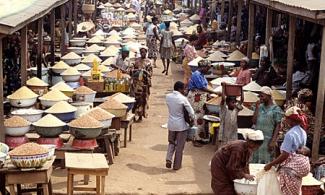
The average consumer price index increased by three basis points from 11.37 per cent year-on-year in April to 11.40 per cent year-on-year in May. Inflation also soared in both urban and rural areas.

Same as April, the food index caused a jump in the average price of products in the month of May says data released by the Nigerian Bureau of Statistics.
The price of volatile agricultural produce increased to 13.79 per cent from 13.70 per cent year-on-year in April.
On the other hand, the average consumer price index increased by three basis points from 11.37 per cent year-on-year in April to 11.40 per cent year-on-year in May. Inflation also soared in both urban and rural areas.
The price of commodities in urban dwellings increased by 11.76 percent (year-on-year) in May 2019 from 11.70 percent recorded in April 2019. In rural areas, the cost of goods increased by 11.07 percent in May 2019 from 11.08 percent in April 2019. While the price of food items went up, the price of items excluding edible items went down by three basis points.
All items with the exception of agricultural products were recorded as 9.0 percent in May 2019, down by 0.3 percent when compared with 9.3 percent documented in April 2019, NBS data shows.
Although, it is not advised to compare states, NBS says Kebbi was the most expensive place to invest in the country for the month of May 2019.
In May 2019, all items inflation- agricultural and non-agricultural commodities, on year on year basis was highest in Kebbi (15.76%). Bauchi State picked the second runner-up spot with a price increase of 14.97%.
Kaduna was the third most expensive part of the country to live in with a price increase of 13.74% of all products sold in the state.
On the other axis, Kwara State with a percentage increase in commodities of 8.45%, was the cheapest place to stay in Nigeria. Cross River was the second cheapest part of the country to earn a living; it had a price increase of rice of 9.68%. Abia weighed in at third with a price increase of 9.91%.
On the food side, the cost of edible items on a year on year basis was highest in Kebbi State, at an increase of 18.90%. Kaduna at 17.10%, was second. Gombe State was the third most expensive place to get food items with a percentage increase of 16.90%.
The cheapest places to buy food items were, Kogi State 11.80%, Rivers State 11.70% and Abia state, 10.90%.
The monthly inflation rates released by the Nigerian Bureau of Statistics measures the percentage at which the prices of products rise or fall. When the data shows a reduction, therefore, it means there was an increase in the price of that product but at a reduced percentage. If there is a reduction in price, it means there was deflation.